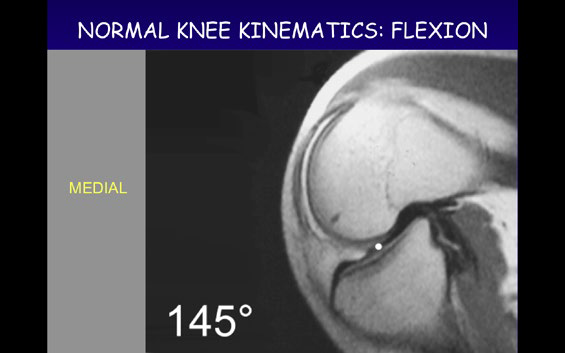1. Chatterji U, Ashworth MJ, Lewis PL, Dobson PJ. Effect of total knee arthroplasty on recreational and sporting activity. ANZ J Surg. 2005; 75: 405-408. doi: 10.1111/j.1445- 2197.2005.03400.x
2. Noble PC, Gordon MJ, Weiss JM, Reddix RN, Conditt MA, Mathis KB. Does total knee replacement restore normal knee function? Clin Orthop Relat Res. 2005; (431): 157-165. doi: 10.1097/01.blo.0000150130.03519.fb
3. Schulze A, Scharf HP. [Satisfaction after total knee arthroplasty. Comparison of 1990-1999 with 2000-2012]. Orthopade. 2013; 42(10): 858-865. doi: 10.1007/s00132-013-2117-x
4. Pope MH. Giovanni Alfonso Borelli: the Father of Biomechanics. Spine. 2005; 30(20): 2350-2355. doi: 10.1097/01.brs.0000182314.49515.d8
5. Dennis DA, Mahfouz MR, Komistek RD, et al. In vivo determination of normal and anterior cruciate ligament-deficient knee kinematics. J Biomech. 2005; 38(2): 241-253. doi: 10.1016/j. jbiomech.2004.02.042
6. Komistek RD, Dennis DA, Mahfouz M. In vivo fluoroscopic analysis of the normal human knee. Clin Orthop Relat Res. 2003; 410: 69-81. doi: 10.1097/01.blo.0000062384.79828.3b
7. Baldini A, Aglietti P, Vena LM, Lup D, Indelli PF. Postoperative recovery and early results: Meniscal Bearing Knee vs Legacy PS. Arthroscopy. 2001; 17(6): Suppl 2(p1): S1-S55.
8. Leszko F, Hovinga KR, Lerner AL, et al. In vivo normal knee kinematics: Is ethnicity or gender an influencing factor? Clin Orthop Relat Res. 2011; 469(1): 95-106. doi: 10.1007/s11999- 010-1517-z
9. Grieco TF, Sharma A, Komistek RD, Cates HE. Single versus multiple-radii cruciate-retaining total knee arthroplasty: An invivo mobile fluoroscopy study. J Arthroplasty. 2016; 31: 694- 701. doi:10.1016/j.arth.2015.10.029
10. Joglekar S, Gioe TJ, Yoon P, Schwartz MH. Gait analysis comparison of cruciate retaining and substituting TKA following PCL sacrifice. The Knee. 2012; 19(4): 279-285. doi: 10.1016/j.knee.2011.05.003
11. Iwaki H, Pinskerova V, Freeman MAR. Tibiofemoral movement 1: the shapes and relative movements of the femur and tibia in the unloaded cadaver knee. J Bone Joint Surg Br. 2000; 82(8):1189. doi: 10.1302/0301-620x.82b8.10717
12. Li G, Zayontz S, DeFrate LE, et al. Kinematics of the knee at high flexion angles: An in vitro investigation. J Orthop Res. 2004; 22(1): 90-95. doi: 10.1016/S0736-0266(03)00118-9
13. Banks SC, Hedge WA. Direct measurement of 3D knee prosthesis kinematics using single plane fluoroscopy. Proceedings of the Orthopaedic Research Society. l993; 18: 428.
14. Bellemans J, Banks S, Victor J, et al. Fluoroscopic analysis of the kinematics of deep flexion in total knee arthroplasty: influence of posterior condylar offset. J Bone Joint Surg Br. 2002; 84(1): 50-53. doi: 10.1302/0301-620X.84B1.12432
15. Victor J, Banks S, Bellemans J. Kinematics of posterior cruciate ligament retaining and -substituting total knee arthroplasty. A prospective randomized outcome study. J Bone Joint Surg Br. 2005; 87(5): 646-655. doi: 10.1302/0301-620X.87B5.15602
16. Stiehl JB, Komistek RD, Dennis DA, Paxson RD, Hoff WA. Fluoroscopic analysis of kinematics after posterior-cruciateretaining knee arthroplasty. J Bone Joint Surg Br. 1995; 77(6): 884-889.
17. Dennis DA, Komistek RD, Hoff WA, et al. In vivo knee kinematics derived using an inverse perspective technique. Clin Orthop Relat Res. 1996; 331: 107-117. doi: 10.1097/00003086-199610000-00015
18. Yoshiya S, Matsui N, Komistek RD, Dennis DA, Mahfouz M, Kurosaka M. In vivo kinematic comparison of posterior cruciate-retaining and posterior stabilized total knee arthroplasties under passive and weight-bearing conditions. J Arthroplasty. 2005; 20(6): 777-783. doi: 10.1016/j.arth.2004.11.012
19. Incavo SJ, Mullins ER, Coughlin KM, Banks S, Banks A, Beynnon BD. Tibiofemoral kinematic analysis of kneeling after total knee arthroplasty. J Arthroplasty. 2004; 19(7): 906-910. doi: 10.1016/j.arth.2004.03.020
20. Dennis DA, Komistek RD, Mahfouz MR, Haas BD, Stiehl JB. Multicenter Determination of In Vivo Kinematics After Total Knee Arthroplasty. Clin Orthop Relat Res. 2003; (416): 37-57. doi: 10.1097/01.blo.0000092986.12414.b5
21. Shimmin A, Martinez-Martos S, Owens J, Iorgulescu AD, Banks SA. Fluoroscopic motion study confirming the stability of a medial pivot design total knee arthroplasty. Knee. 2015; 22(6): 522-526. doi: 10.1016/j.knee.2014.11.011
22. Scott G, Iman MA, Eifert A, et al. Can a total knee arthroplasty be both rotationally unconstrained and anteroposteriorly stabilized? Bone Joint Res. 2016; 5: 80-86. doi: 10.1302/2046- 3758.53.2000621
23. Elias SG, Freeman R, Gokcay EI. A correlative study of the geometry and anatomy of the distal femur. Clin Orthop Relat Res. 1990; 260: 180-186.
24. Hollister AM, Jatana SAK, Sullivan WW, Lupichuk A. The axes of rotation of the knee. Clin Orthop Relat Res. 1993; 290: 259-268.
25. Kurosawa H, Walker PS, Abe S, Garg AT, Hunter T. Geometry and motion of the knee for implant and orthotic design. J Biomech. 1985; 18(7): 487-491. doi: 10.1016/0021-9290(85)90663-3







